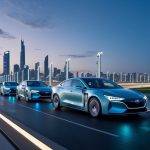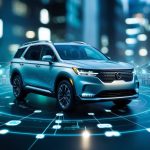Charging and Refueling Infrastructure
Refueling a hybrid is straightforward, as it relies on ubiquitous gasoline stations. This ease of access makes hybrids very practical for long-distance travel. In contrast, EV owners must navigate the availability and convenience of charging infrastructure, which varies widely by region.
Most EV owners charge at home, but public charging stations are essential for long trips. Urban areas generally have more public charging options, while rural areas may lag behind. Charging times also vary, with fast chargers taking 30-45 minutes for an 80% charge, while standard chargers can take several hours.
The choice between hybrids and electric vehicles can hinge on personal driving habits and the local availability of charging or refueling stations.
Government Incentives and Policies
Government incentives and policies play a crucial role in promoting hybrid and electric vehicles. They include tax credits, rebates, and regulations that encourage electrification and help consumers make informed decisions.
Tax Credits and Rebates
Various governments offer tax credits and rebates to encourage the adoption of electric and hybrid vehicles. These financial incentives can significantly reduce the initial purchase cost.
In the United States, buyers can receive a federal tax credit of up to $7,500 for new electric vehicle (EV) purchases. Additionally, many states provide extra incentives, such as rebates ranging from $1,000 to $5,000.
In Europe, countries like Norway and Germany offer substantial tax exemptions and rebates for EV buyers. These benefits include reduced registration fees, exemptions from tolls, and free access to charging stations.
Regulations Favoring Electrification
Governments worldwide are implementing regulations to favor electrification and reduce carbon emissions. These regulations often include stricter emissions standards for internal combustion engine vehicles and mandates for auto manufacturers to produce a certain percentage of zero-emission vehicles.
The European Union’s 2021-2030 climate and energy framework includes stringent CO2 reduction targets for cars. It requires a 37.5% reduction in CO2 emissions for new cars by 2030 compared to 2021 levels.
In China, the government promotes its Dual Credit Policy, which aims to reduce air pollution and encourage electric vehicle production. This policy requires manufacturers to produce a certain amount of new energy vehicles to avoid penalties.
Consumer Considerations
Consumers evaluating hybrid and electric vehicles for 2024 need to consider both market trends and potential adoption barriers. Preferences have shifted over recent years, reflecting broader environmental concerns and technological advancements.
Market Trends and Preferences
Recent years have seen a significant increase in consumer interest in electric vehicles (EVs). This shift is driven by greater awareness of environmental issues and the increasing availability of charging infrastructure. Consumers are also drawn to the lower long-term operating costs of EVs. Brands are expanding their electric models, offering more choices in different price ranges and styles.
Hybrid vehicles remain popular among those who seek the balance of fuel efficiency and longer driving ranges. These vehicles provide a familiar driving experience while reducing fuel consumption and emissions. The affordability and established technology of hybrids continue to attract buyers who are not yet ready to transition to fully electric options.
Adoption Barriers for Consumers
Despite growing interest, some barriers hinder the widespread adoption of electric vehicles. The initial purchase price of EVs is higher compared to traditional and hybrid cars, even though they often result in savings over time. Consumers may be deterred by the lack of a comprehensive charging infrastructure in less urbanized areas, making long-distance travel challenging.
Hybrid vehicles also face obstacles. Potential buyers might be concerned about the complexity of maintaining two powertrains. Additionally, the environmental benefits, while significant, are not as impactful as those of fully electric vehicles, which may influence more eco-conscious consumers to wait or opt for an EV instead.
Navigating these considerations requires consumers to weigh immediate costs, long-term benefits, and individual needs.



